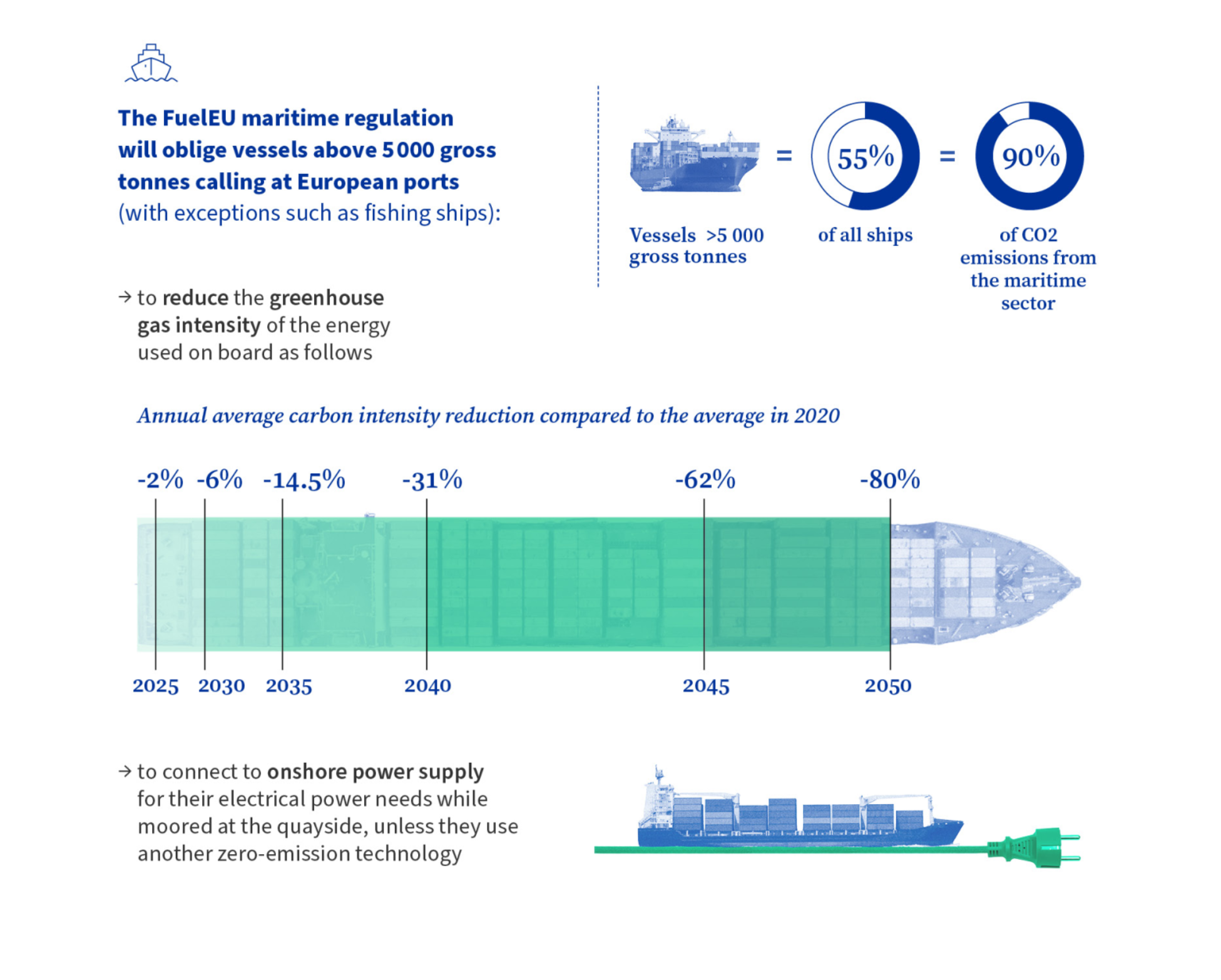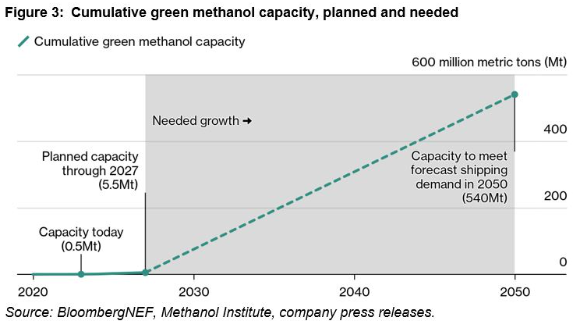Renewable methanol is an ultra-low carbon chemical produced from sustainable biomass, often called biomethanol, or emethanol from carbon dioxide and hydrogen produced from renewable electricity.
— Methanol Institute
Compared to conventional fuels, renewable methanol significantly reduces carbon dioxide emissions by up to 95% and nitrogen oxide emissions by up to 80%, while completely eliminating sulfur oxide and particulate matter emissions.
These advantages make renewable methanol a promising alternative fuel for the shipping industry, helping to meet increasingly stringent environmental regulations and reduce the carbon footprint of maritime transportation.
Methanol, a liquid chemical widely used in thousands of everyday products such as plastics, paints, cosmetics, and fuels, is created from synthesis gas (syngas). Syngas is a mixture of hydrogen (H), carbon dioxide (CO2), and carbon monoxide (CO), with its simple ingredients sourced from a variety of feedstocks and produced using different technologies.

Driving Policies – Countries and Companies
Regulatory Pressures Drive Shift to Alternative Fuels in Maritime Shipping
Policies and initiatives are being implemented worldwide to reduce greenhouse gas (GHG) emissions in the shipping industry, with a strong emphasis on achieving net-zero emission goals. In the United States, the Renewable Fuel Standards (RFS) Program supports the use of sustainable fuels, alongside investment and production tax credit programs that incentivize alternative energy adoption.
Globally, the International Maritime Organization (IMO) is driving efforts to end fossil fuel consumption in shipping and has set ambitious targets to achieve net-zero emissions by 2050. Similarly, the European Union (EU) has introduced the FuelEU Maritime Initiative, which mandates the use of sustainable fuels, including biofuels, contributing significantly to the reduction of greenhouse gas emissions by an impressive 80% by 2050.
National governments across the globe are also reinforcing these efforts through their own policies to support the transition to alternative fuels, such as bio-methanol. These measures are complemented by commitments from leading corporations, including Amazon, Ikea, Unilever, Michelin, DuPont, and Target, which have pledged to conduct shipping operations exclusively with companies that utilize carbon-neutral fuels. These combined actions reflect a unified move toward a sustainable and environmentally friendly future for the shipping industry.

European Maritime Regulation – FuelEU
With a base line year of 2020 and an effective date of January 1, 2025, the FuelEU regulations sets maximum limits for yearly average greenhouse gas intensity by ships above 5,000 gross tonnage that are calling on European ports. The annual greenhouse reductions targets start at 2% by 2025 and reach 80% by the year 2050.

It’s now, ‘All Hands-On Deck’ as the shipping industry
searches for a fuel that can help it clean up its act
The verdict is in… it’s green methanol
The shipping industry has firmly embraced green methanol as the fuel of the future, signaling a significant transition towards sustainability. The green methanol shipbuilding market is anticipated to grow substantially, with its valuation estimated at $4.29 billion in 2025, projected to reach $15.25 billion by 2030, and expected to climb further to $30.98 billion by 2035. This remarkable growth reflects a compound annual growth rate (CAGR) of 21.9% between 2025 and 2035.
Container ships are poised to dominate the green methanol ship market, highlighting the industry’s strategic preference for this renewable fuel. Shipping companies are proactively establishing net-zero emission targets, underscoring their dedication to environmental responsibility. This commitment is reinforced by the current fleet of 120 green methanol-powered ships, alongside over 300 additional ships currently on order and is project to grow. These figures exemplify the industry’s robust investment in renewable methanol and its determination to reduce carbon emissions in the maritime sector.

BloombergNEF Projections
Increase Development of Fuel Capacity Needs to Ramp Up Fast

BloombergNEF projects a need for a rapid increase in the development of green methanol production capacity, highlighting an immense opportunity for renewable methanol producers to address projected shortfalls. By 2027, annual capacity for green methanol projects is forecasted to reach 5.5 million tons, which represents an elevenfold increase compared to 2023 production levels. However, by 2028, production is expected to grow to only 11 million tons, leaving a significant gap of 3 million tons against the anticipated demand of 14 million tons.
This shortfall underscores the pressing need for renewable methanol producers to ramp up capacity. Long-term projections show that green methanol production must reach an astonishing 540 million tons annually by 2050 to meet global energy demands. Nevertheless, challenges such as feedstock costs and availability pose significant hurdles that must be overcome to achieve these ambitious targets. By addressing these obstacles, producers have a critical opportunity to scale their operations and play a pivotal role in advancing the renewable energy transition.
Questions? We Look Forward to Hearing From You.

